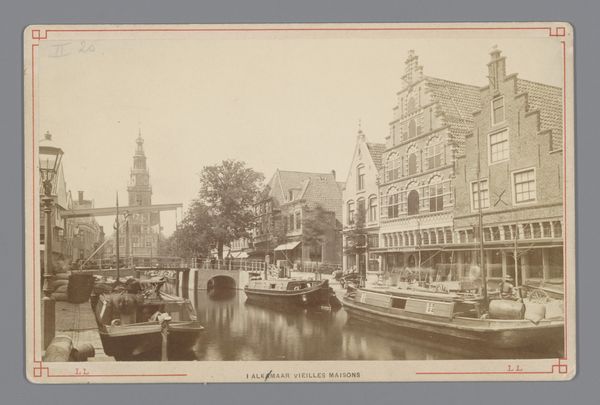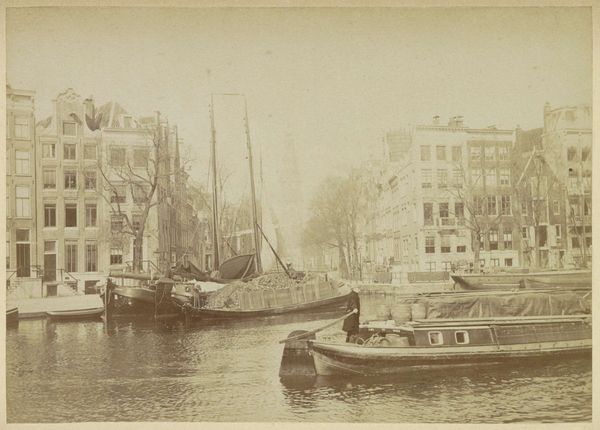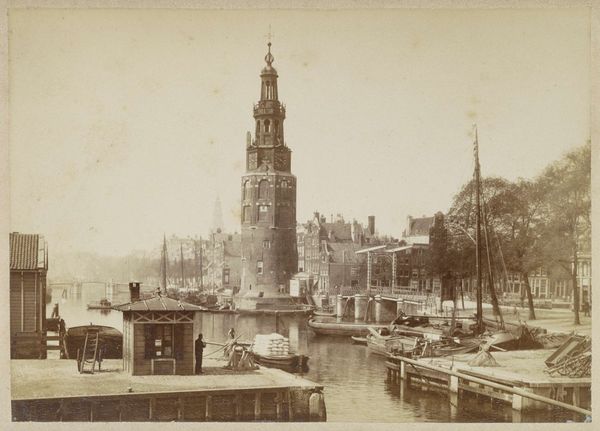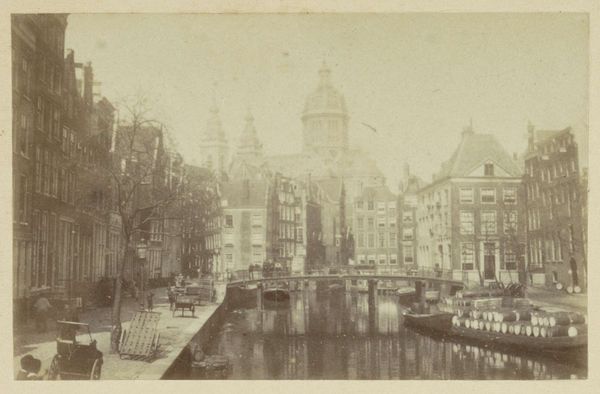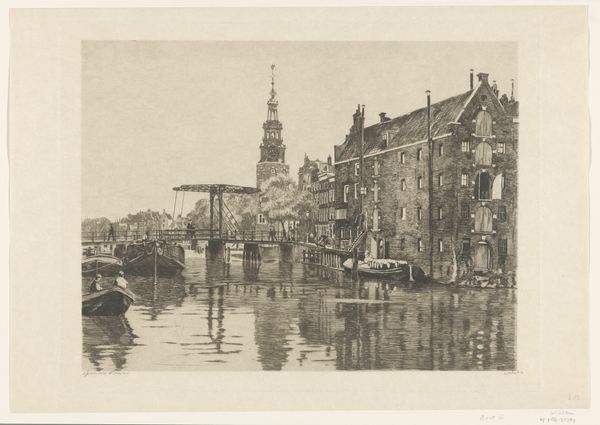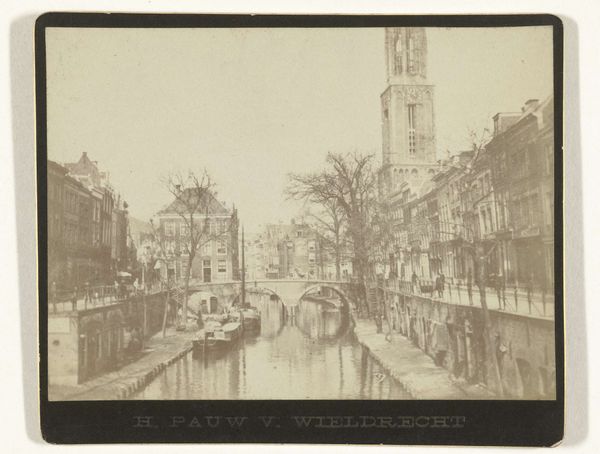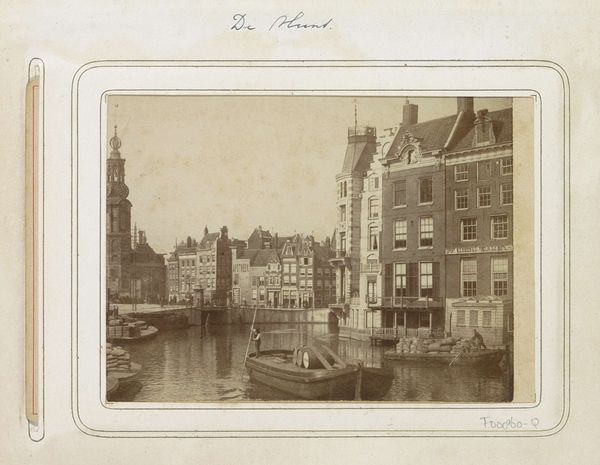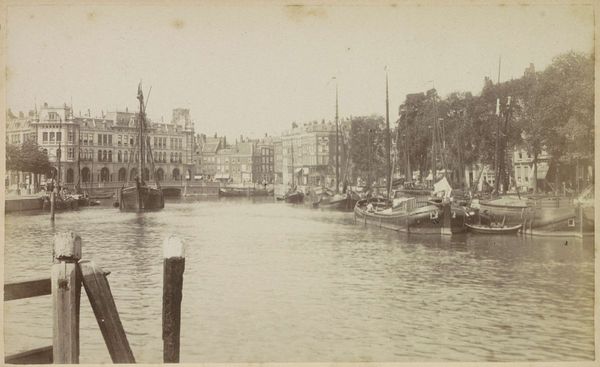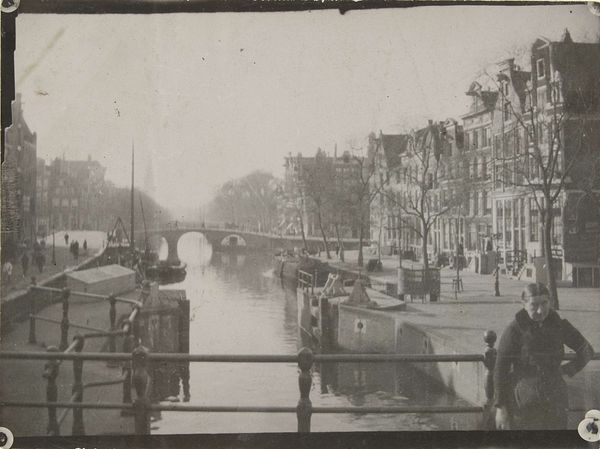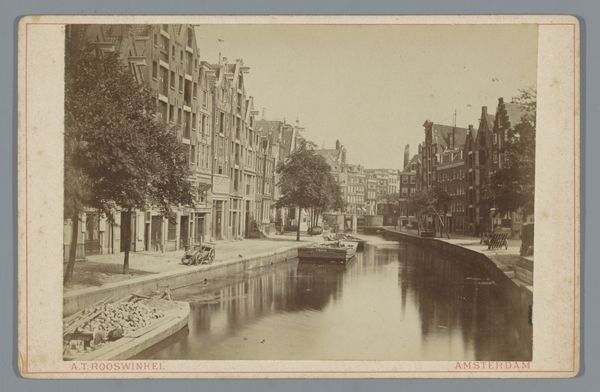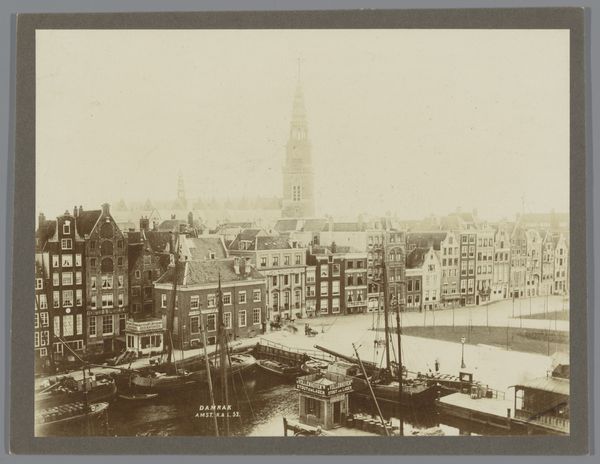
Groenburgwal en Zuiderkerk, gezien vanaf de Amstel, Amsterdam c. 1880 - 1895
0:00
0:00
photography, albumen-print
#
pictorialism
#
landscape
#
photography
#
cityscape
#
albumen-print
Dimensions: height 97 mm, width 150 mm
Copyright: Rijks Museum: Open Domain
Curator: Andries Jager's albumen print, "Groenburgwal en Zuiderkerk, gezien vanaf de Amstel, Amsterdam," likely captured between 1880 and 1895, offers us a glimpse into Amsterdam's urban fabric during that time. Editor: My initial reaction is the texture—the softness in the water is a surprising contrast to the density of the buildings and the weight of what seem to be material goods on those boats. Curator: That textural play is, I think, crucial to understanding Pictorialism. Photography at the time was wrestling with its place in the art world and often attempted to mimic painting's aesthetic qualities. The composition is quite deliberate—notice the way the Zuiderkerk's tower punctuates the skyline, almost asserting the Church’s, and by extension, the state’s power over the scene. Editor: Power dynamics visualized! Right down to the grit on those embankments. The way everything is oriented around industry and transport: labor isn't only visible in those bundled materials on the boats; the entire scene emphasizes work, industry, and perhaps its human cost given that grey monotone feel to it. It really makes me think about what kind of work went into both the shipping of goods, but also producing photographs. What's the supply chain look like? Curator: Indeed! Jager was deeply involved in civic life and photographing cityscapes became his means to actively participate in it. These images then were tools for promotion, both civic and economic. They shaped Amsterdam's image, reinforcing particular narratives about the city's character and ambitions to its population. Editor: Right, we’re consuming an industrial image. So even its production mirrors that, which impacts my perspective. The way this photo monumentalizes seemingly everyday transactions! Who gets memorialized in imagery, and for whom is that memory preserved? This piece makes that so apparent. Curator: That question of who is being represented—and for what purpose—is very important. It pushes us to interrogate whose stories were being told, and perhaps more significantly, whose were not. Editor: This photograph helps us contemplate production as a method. It invites us to assess both human elements involved in building a city’s industry in the nineteenth century and preserving memory through that lens.
Comments
No comments
Be the first to comment and join the conversation on the ultimate creative platform.
